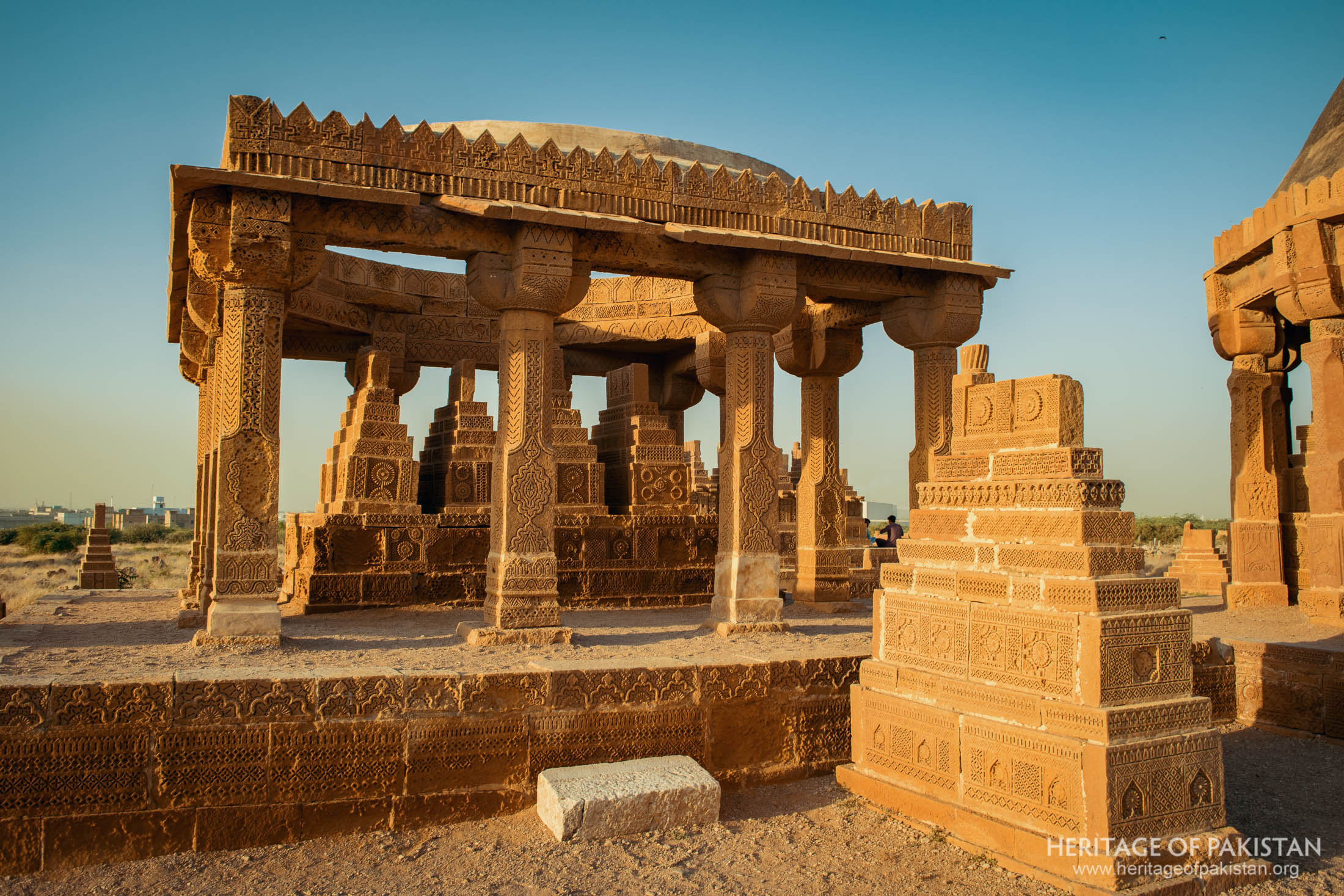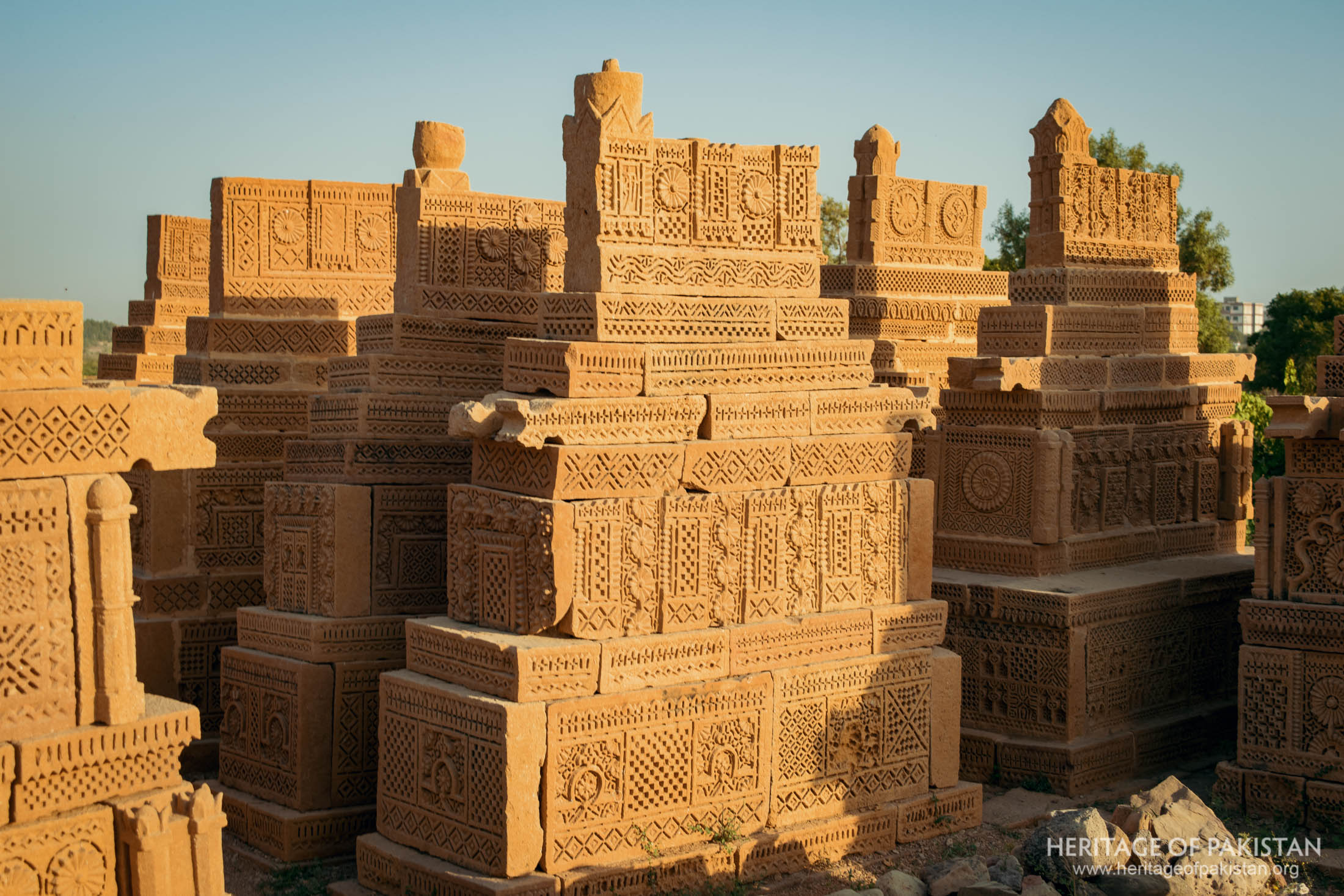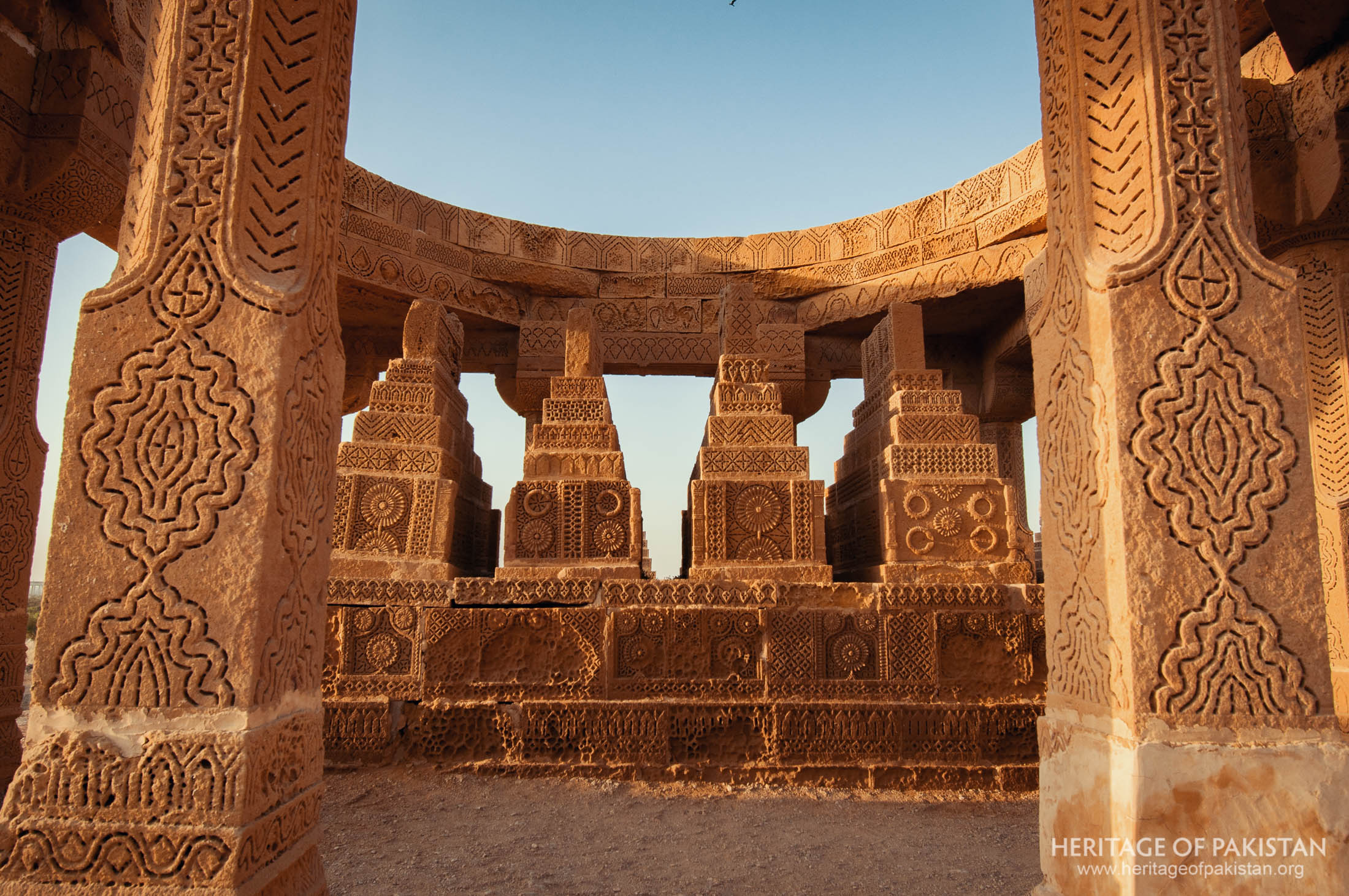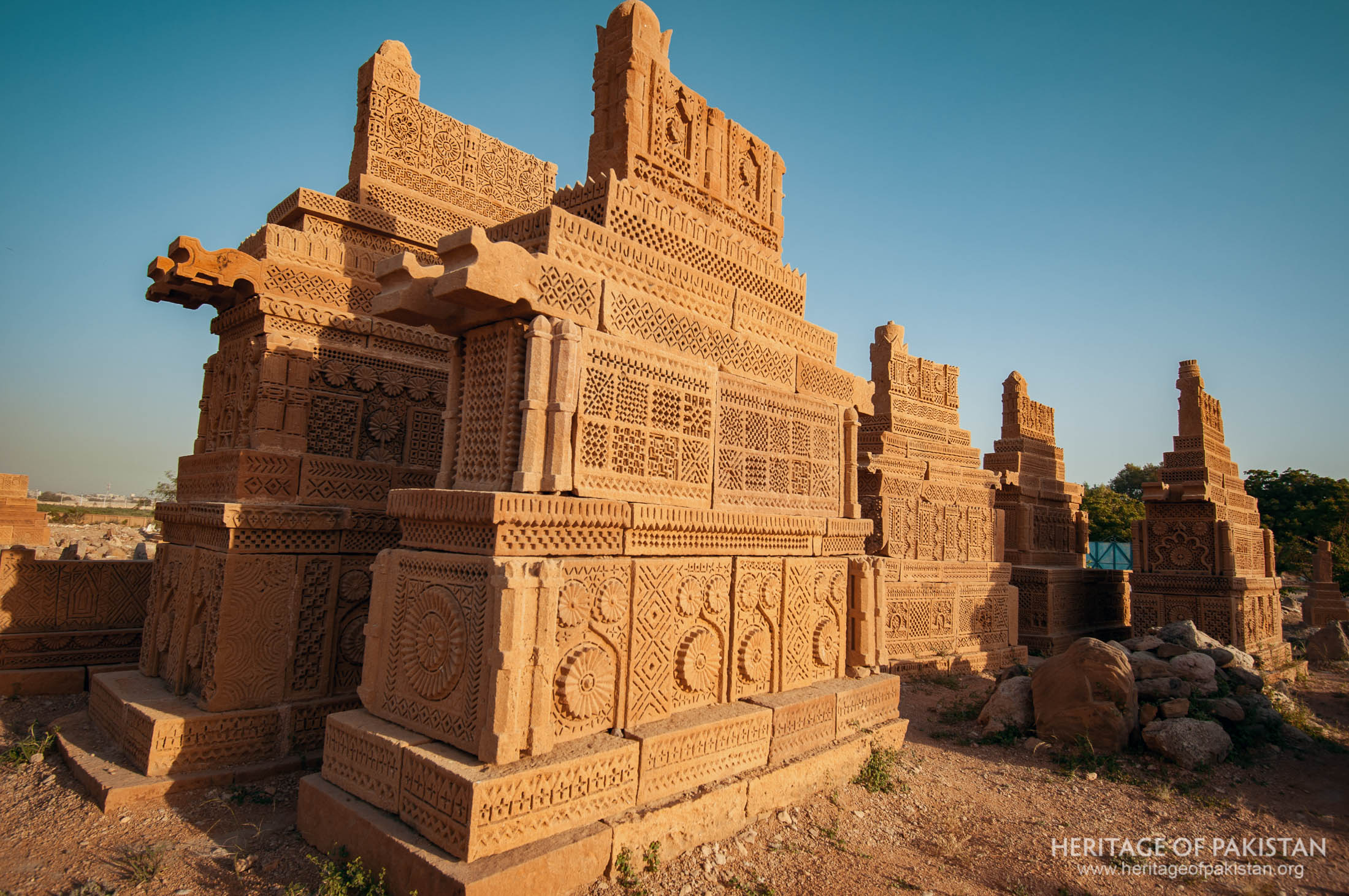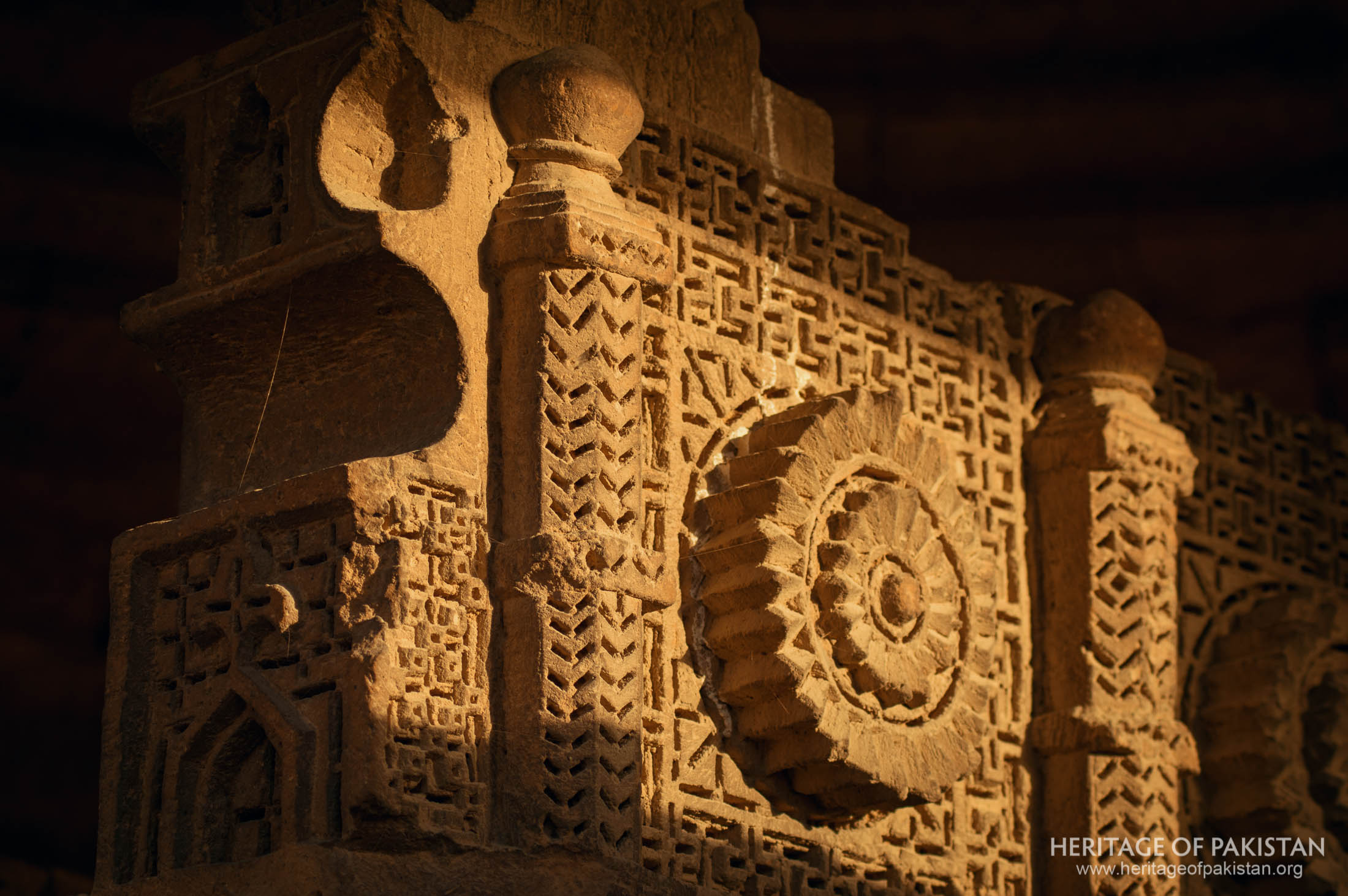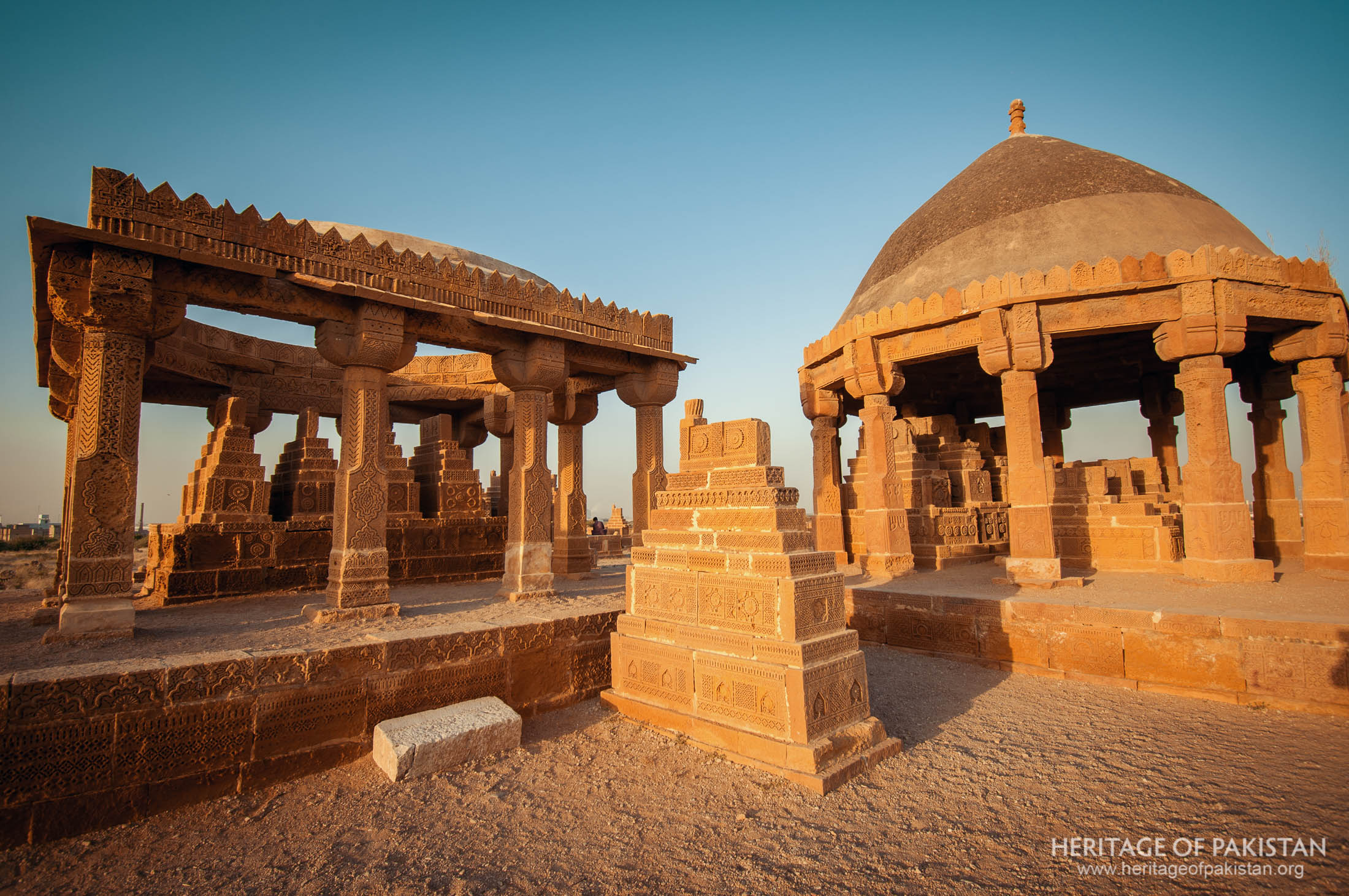Textarea
The Chaukhandi Tombs, located near Karachi in Sindh, Pakistan, are a significant funerary site renowned for their intricately carved yellow sandstone tombs.
Dating back to the 16th century and afterwards, these tombs exhibit a unique architectural style exclusive to Sindh, characterized by elaborate carvings that integrate regional, Islamic, and pre-Islamic motifs.
This style of tomb construction, often referred to as 'Chaukhandi tombs,' can also be observed in parts of Sindh and Balochistan.
The sarcophagi are adorned with some of the region's finest stone carvings, closely resembling those at the Makli Necropolis in Thatta
The tombs typically feature a pyramidal form with a broad base that narrows through stepped levels, culminating in an intricate top.
The carvings include complex geometric patterns, human and figural depictions, and regionally significant symbols.
These tombs are primarily associated with Baloch warriors and their families who settled in the region between the 16th and 18th centuries
The surfaces of these tombs are elaborately adorned with intricate carvings that incorporate both geometric and floral motifs.
The iconography of the Chaukhandi tombs varies significantly. Male tombs are typically decorated with carvings of riders and weaponry, while female tombs prominently feature representations of jewelry.
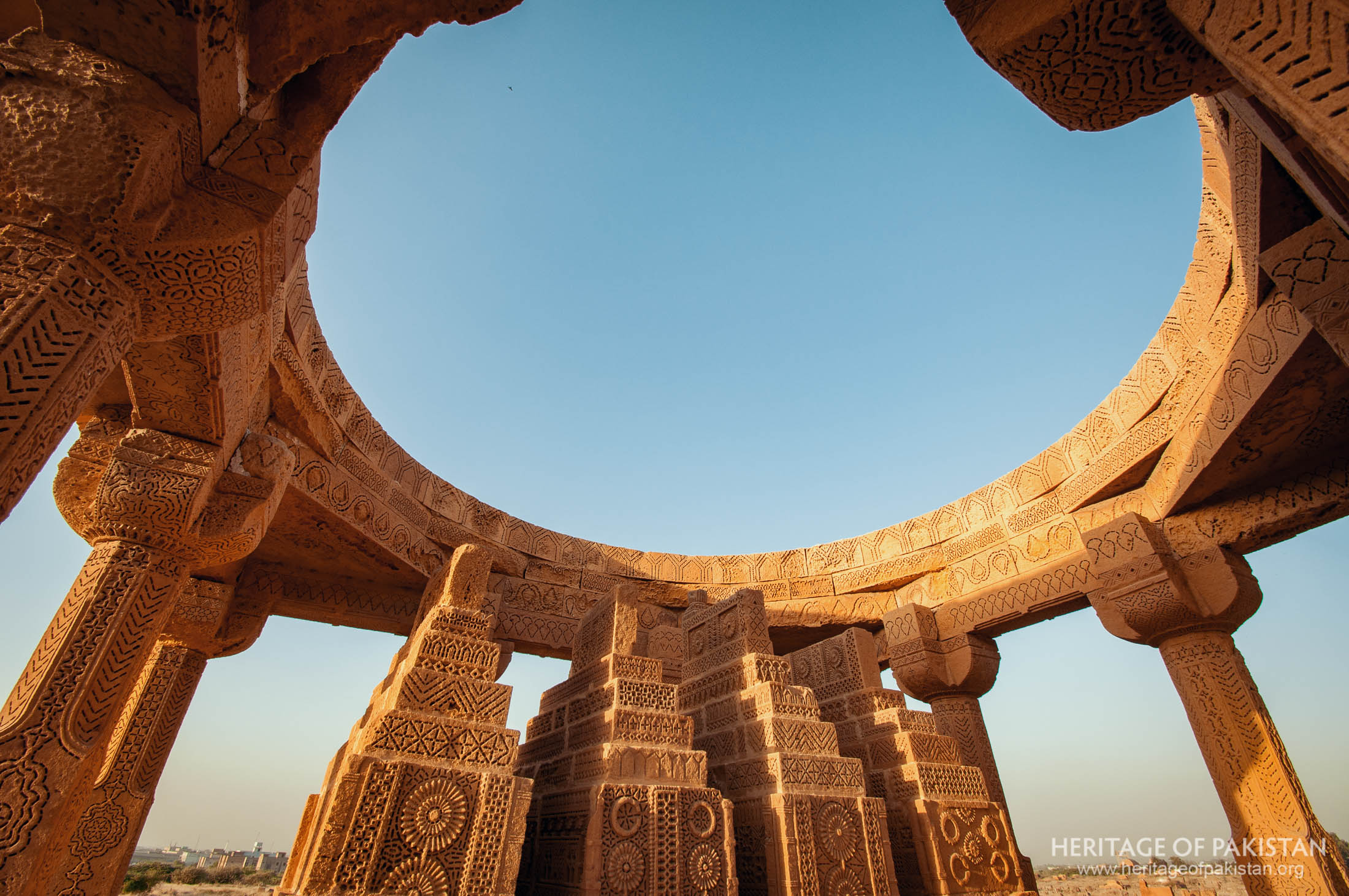
Recognized for their historical and artistic significance, the Chaukhandi Tombs are listed on UNESCO’s Tentative List of World Heritage Sites


